Sleep patterns in children and adolescents
First created | 10/10/2011
Last edited |
- Ohayon MM. Sleep patterns in children and adolescents. SleepEval.com Website. Oct 2011.
- Ohayon MM, Carskadon MA, Guilleminault C, Vitiello MV. Meta-analysis of quantitative sleep parameters from childhood to old age in healthy individuals: developing normative sleep values across the human lifespan. Sleep. 2004 Nov 1;27(7):1255-73. Free PMC
Four age-related changes have been consistently demonstrated in polysomnographic (PSG) studies of sleep architecture:
- total sleep time (7-29),
- sleep efficiency (7,9-14,17-23,25-29,30-36), and
- slow wave sleep (7,8,10, 12-18, 21-28, 31,33, 35,37-39) all decrease, while
- wake after sleep onset (12-14,16,17,19,21,23,28,29, 32,33,36,37,40) increases with age.
Why such discrepancies between the studies?
Several factors may be responsible for the difficulties identifying age trends in sleep architecture of apparently healthy subjects. For example: small sample sizes; inconsistency in controlling factors that may influence sleep, such as mental or physical illness; insufficient screening for sleep disorders.
METHODS
TARGETED STUDIES
- Non-clinical studies
- Participants aged 5 to 18 years
- measures of sleep characteristics by "all night" polysomography (PSG)
- or measures of sleep-wake patterns obtained by questionnaires.
- data presented numerically
- published between 1960 and 2003 in peer-reviewed journals.
VARIABLES ANALYZED
- Sleep latency (SL)
- Sleep efficiency (SE)
- Total sleep time (TST)
- Stage 1,
- stage 2,
- slow wave sleep (SWS),
- REM
- REM latency
- Minutes awake after sleep onset (WASO)
- Bedtime & rising time
QUESTIONNAIRES
- Number of studies: 21
- Number of subjects: 24,617
- Age range: 5-18 years
- Data examined:
- Bedtime,
- rising time and
- sleep duration for weekdays and weekends.
- Europe versus USA
BEDTIME
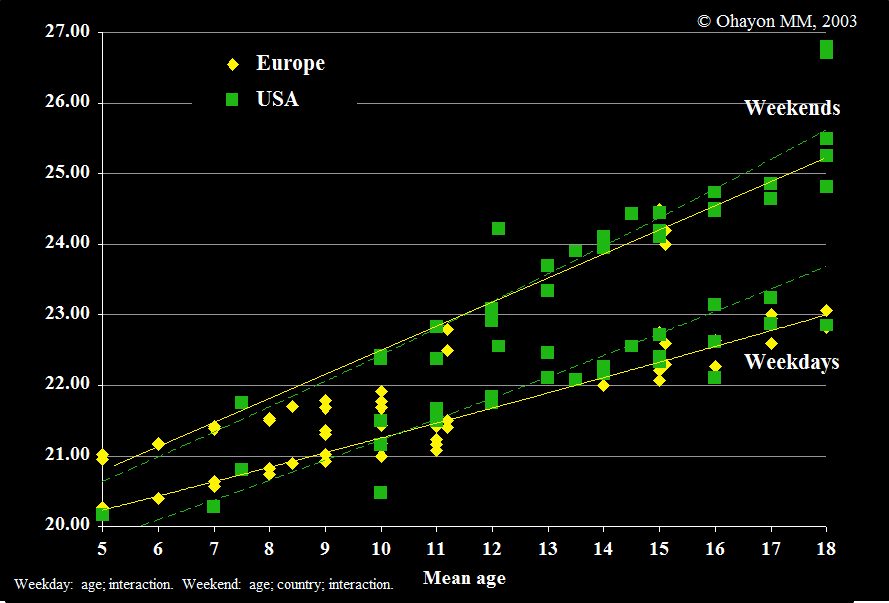
RISING TIME
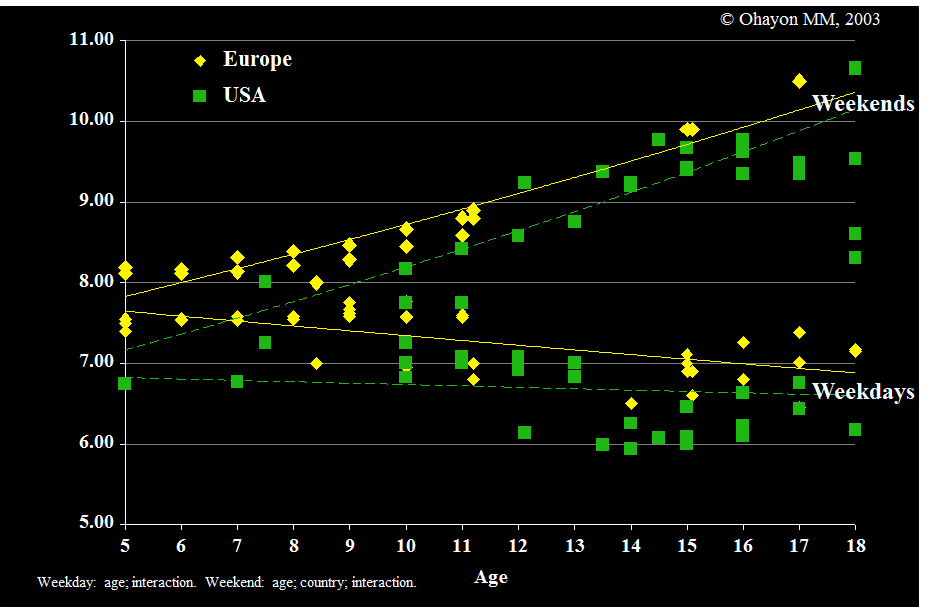
NIGHTTIME SLEEP DURATION
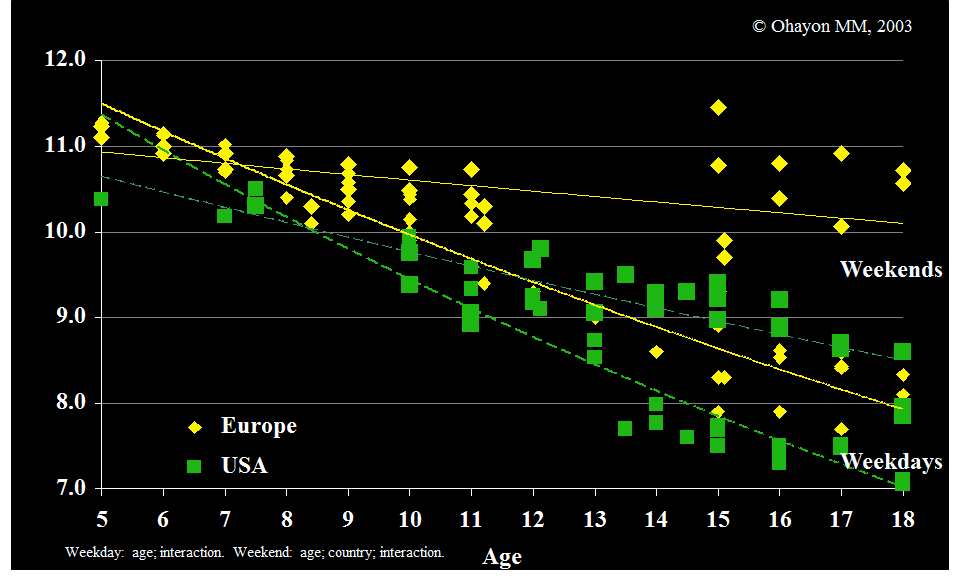
POLYSOMNOGRAPHY OR ACTIGRAPHY
- Number of studies = 18
- Number of subjects = 1,186 ¨Age range: 5-18 years
- Variables examined: TST, SL, SE, WASO, REM, S1, S2, SWS
SIGNIFICANT CHANGES
- TST
- Percentage stage 2
- Percentage SWS
- Percentage REM
TOTAL SLEEP TIME
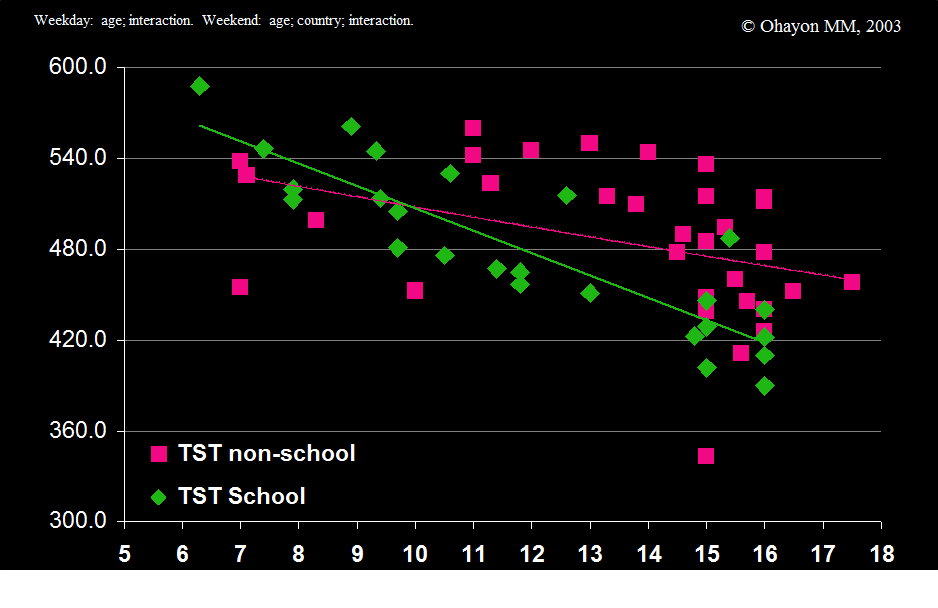
PERCENTAGE OF STAGE 2
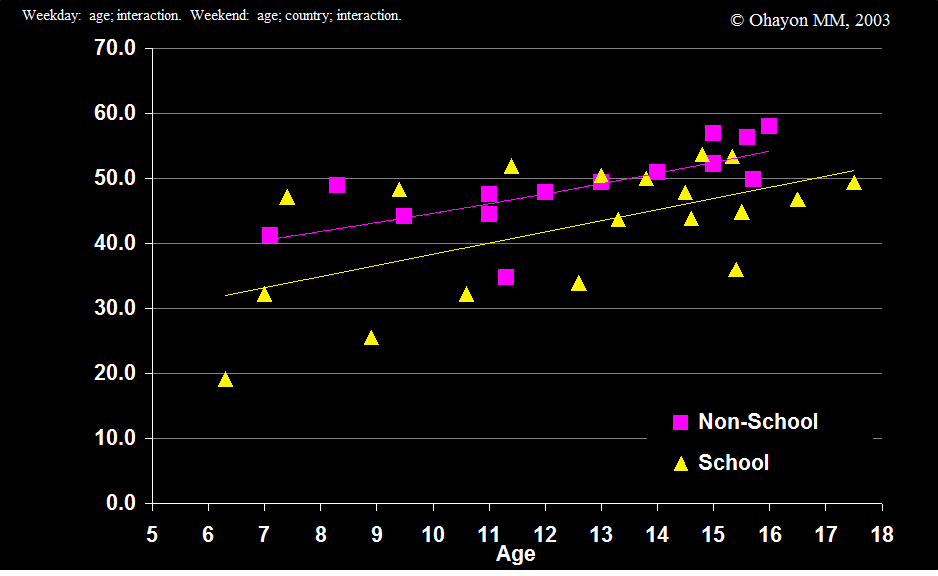
PERCENTAGE SWS
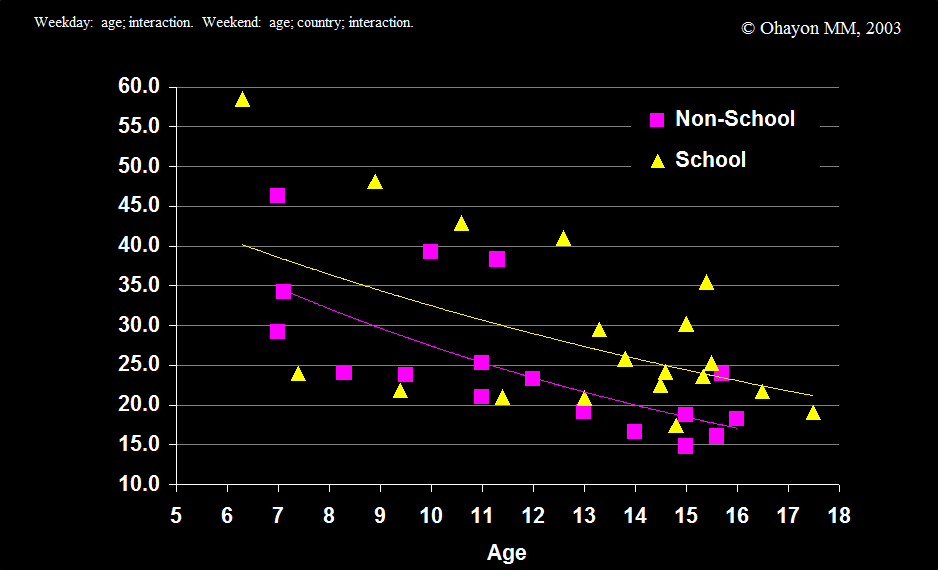
PERCENTAGE REM
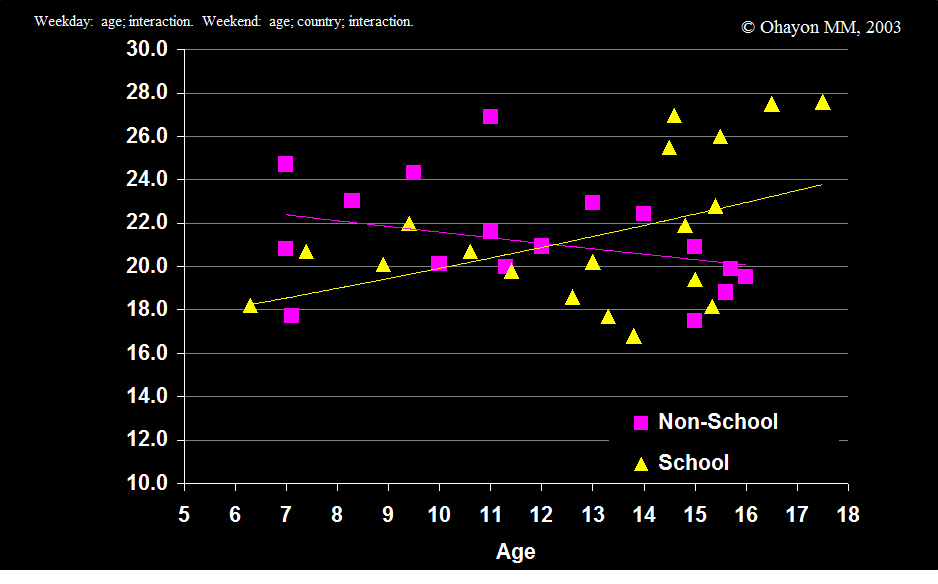
Discussion
QUESTIONNAIRES
Age effects for weekdays and weekends
- Bedtime,
- rise time,
- total sleep time
Country effects
- Weekday rise time & TST,
- weekend bedtime, rise time,
- TST
Interaction effects
- Weekday bedtime,
- rise time,
- TST
- weekend bedtime & TST
European studies focused more on younger samples than did US studies.
Patterns across age were reasonably consistent.
Interactions likely reflect socio-cultural differences.
PSG
Significant age-related changes in:
- TST,
- Stage 2 Sleep,
- SWS,
- REM
Extremely large variability.
Methodology may contribute to differences.
Careful controls and protocols are needed.
CONCLUSION
Normative data can provide a framework for understanding changes with age across time.
Societal and cohort differences may emerge as well-controlled studies emerge.
